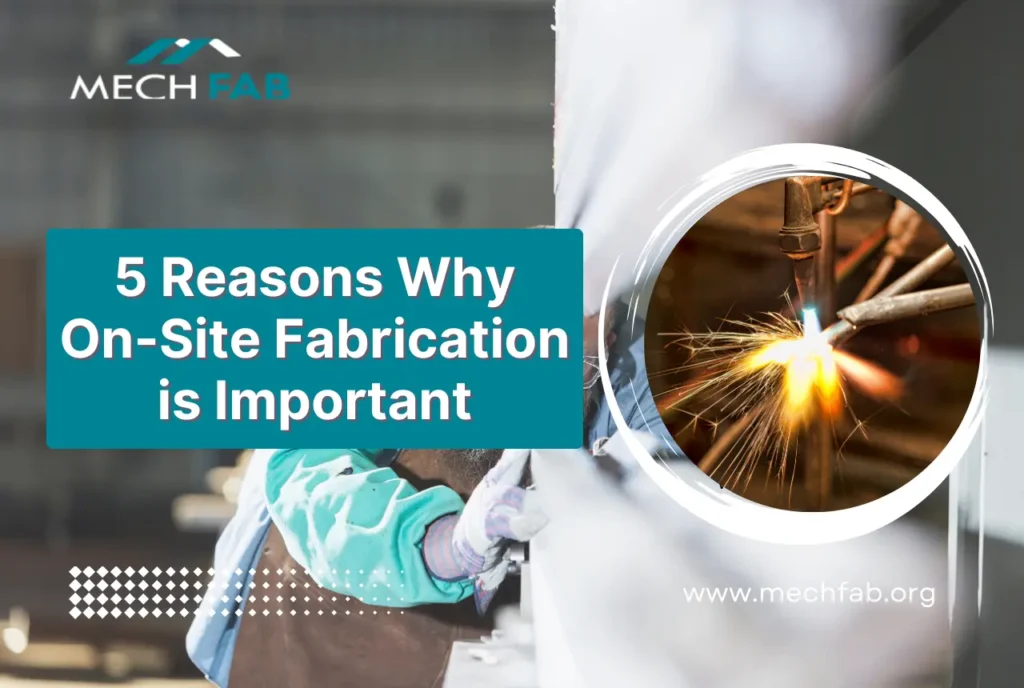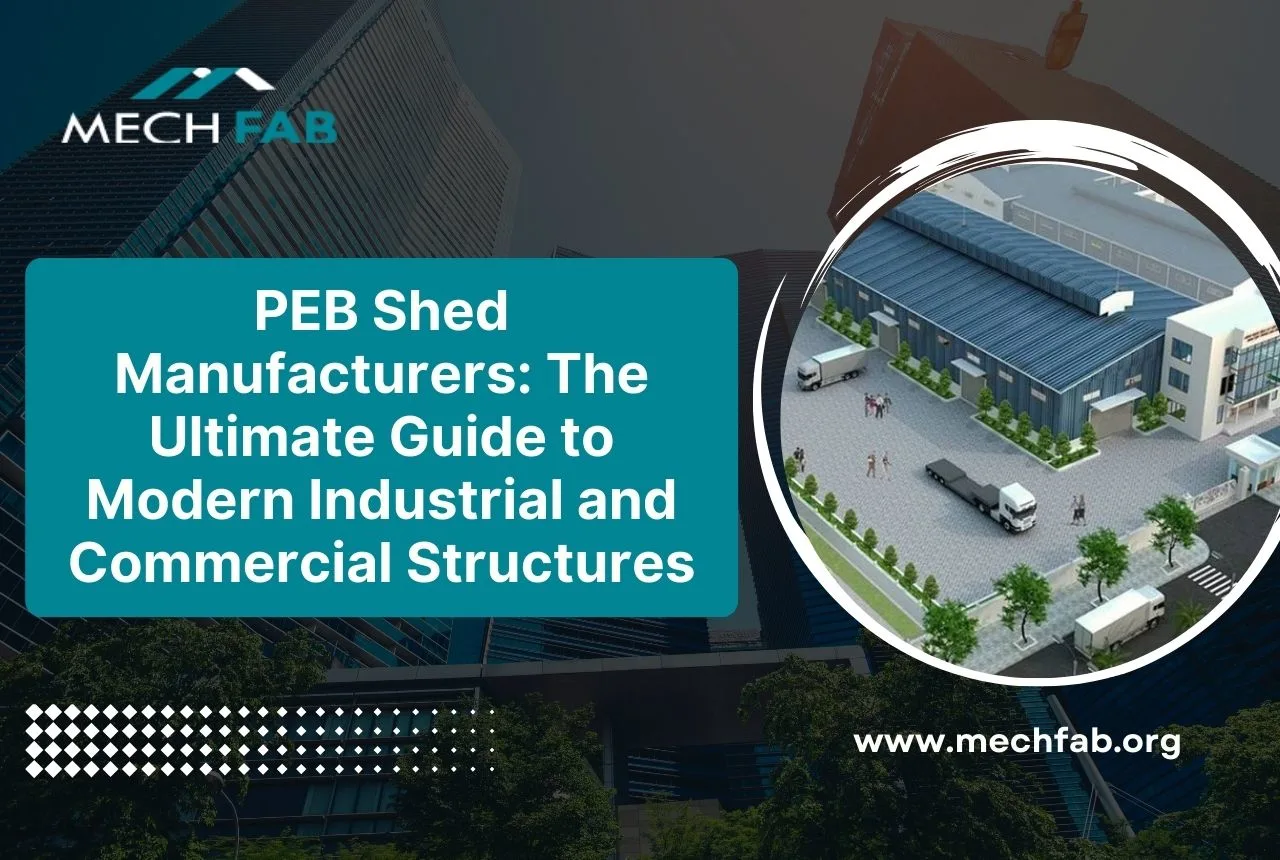On- site Fabrication is the dynamic introduction to the realm of construction. An innovation that is key to keep one ahead of the curve. Emerged as a game changer, on-site fabrication is reshaping the future. Altering the way of construction by giving the structures a new life. An approach that is revolutionary while creating and assembling construction components. Giving numerous advantages to builders and engineers, by making building easier.
What is on-site fabrication?
Referred to the process of creating and assembling construction components. On-site fabrication can be directly assembled at the construction site. This cuts short the use of a centralised factory or off-site facility. Powered by flexibility there are multiple elements that can be fabricated. Such as structural components, panels and modules, especially in close proximity. On-site fabrication is an innovative construction methodology. Deviated from traditional practices of prefabricated elements. It is made in distant manufacturing plants and then transported to the construction site.
1.On-site fabrication vs off-site fabrication
On-site fabrication and off-site fabrication are two distinct approaches to constructing buildings and structures, each with its own set of advantages and challenges. Here’s a comparison of the two methodologies:
Customization:
| On-Site | Off-Site |
| Offers a high degree of customization and adaptability to specific project requirements.
Real-time changes and modifications can occur based on the evolving needs of the project. |
On-site fabrication may offer greater customization possibilities compared to prefabrication, as it allows for the production of components in a controlled factory environment. |
Efficiency:
| On-Site | Off-Site |
| Reduces the need for transportation of prefabricated components, leading to increased efficiency in terms of time and cost.
Minimises logistics-related challenges associated with transportation scheduling and costs. |
Prefabricated components reduce on-site construction time by enabling quick assembly upon delivery to the construction site. Factory production can lead to cost savings in terms of labour and material efficiency. |
Quality Control:
| On-Site | Off-Site |
| Provides greater control over the quality of materials and workmanship, as construction teams can monitor the fabrication process on-site. |
In the factory setting, we manage quality control through standardized processes and inspections to ensure consistent quality. |
Environmental Impact:
| On-Site | Off-Site |
| Can contribute to environmental sustainability by minimising the transportation of construction materials, reducing carbon emissions and overall environmental impact. |
Transporting prefabricated components to the construction site may contribute to transportation-related environmental impacts. |
Safety and Flexibility
| On-Site | Off-Site |
| Improves safety conditions for construction workers by minimising the need for transporting and lifting heavy prefabricated components.
Enables construction projects to have a high level of flexibility, making it easier to accommodate changes in design or scope. |
Manufacturing components off-site based on predetermined plans may result in less flexibility to accommodate changes during the construction process. |
2. On-site fabrication techniques
This type of involves the creation and assembly of construction components directly at the construction site. Various techniques are employed to implement on-site fabrication efficiently. Here are some common on-site fabrication techniques:

Formwork Construction:
-
Construction workers use formwork to mold concrete, shaping structural elements such as columns, beams, and slabs.
- On-site formwork construction allows for customization and adaptation to specific project requirements.
Rebar Fabrication and Installation:
- On-site fabrication of reinforcement bars (rebar) involves bending, cutting, and assembling steel bars to reinforce concrete structures.
- This technique ensures that the rebar is tailored to the specific dimensions and requirements of the construction project.
Concrete Pouring and Curing:
- This often involves pouring and curing concrete directly at the construction site.
- This allows for real-time adjustments to the mix, and the curing process can be closely monitored to ensure optimal strength and durability.
Welding and Metal Fabrication:
- On-site welding is commonly used for the fabrication of metal components, such as steel beams, frames, and supports.
- This technique is adaptable to different construction needs and allows for modifications as required.
3D Printing:
- Emerging technologies like 3D printing are being used for thsi method of construction.
- Portable 3D printers can create intricate components and structures directly at the construction site, offering flexibility and customization.
Modular Construction:
- Modular construction involves the on-site assembly of pre-built modules or units, which are often fabricated off-site.
- This technique can significantly reduce construction time and enhance on-site efficiency.
3. Benefits of on-site fabrication
- Thsi technique offers several benefits in the construction industry, contributing to increased efficiency, cost-effectiveness, and flexibility. Here are the key advantages, presented in a point-wise manner:
- It allows for real-time customization and adjustments to construction components based on specific project requirements.
- Reduces construction timelines by minimising the need for transportation and waiting times associated with off-site fabricated components.
- It enables simultaneous construction activities, leading to faster project completion.
- Reduces overall project costs by streamlining the construction process and minimising material waste.
4. Challenges in on-site fabrication
While on-site fabrication offers numerous benefits, it also comes with its set of challenges. Addressing these challenges is crucial for the successful implementation of on-site fabrication in construction projects. Here are some key challenges associated with on-site fabrication:
- This technique often requires skilled labour with expertise in various construction trades.
- Establishing on-site fabrication facilities and investing in necessary equipment can involve significant upfront costs.
- The construction industry has traditionally followed conventional practices, and there may be resistance to adopting these methods.
- On-site storage of materials poses challenges, especially in crowded urban environments or constrained construction sites.
- While on-site fabrication reduces the need for long-distance transportation, logistics and transportation challenges still exist for raw materials and equipment.
5. On-site fabrication equipment requirements

On-site fabrication necessitates specific equipment to effectively produce and assemble construction components directly at the construction site. Essential equipment varies depending on the nature of the project, but common requirements include welding machines, cutting tools, formwork materials and concrete mixers.
- Welding machines play a crucial role in the fabrication of metal components, allowing for precise assembly and structural integrity.
- Cutting tools, such as saws and drills, are indispensable for shaping materials according to project specifications.
-
Creating molds for pouring concrete, shaping structural elements such as columns and beams, relies on vital formwork materials.
-
To prepare and pour concrete on-site, construction crews employ concrete mixers, allowing them to make real-time adjustments to the mix for optimal strength.






